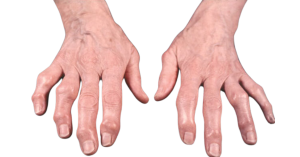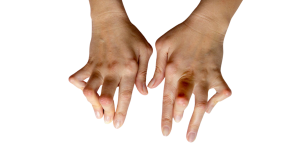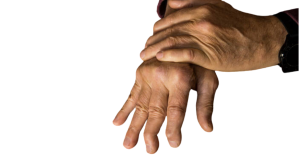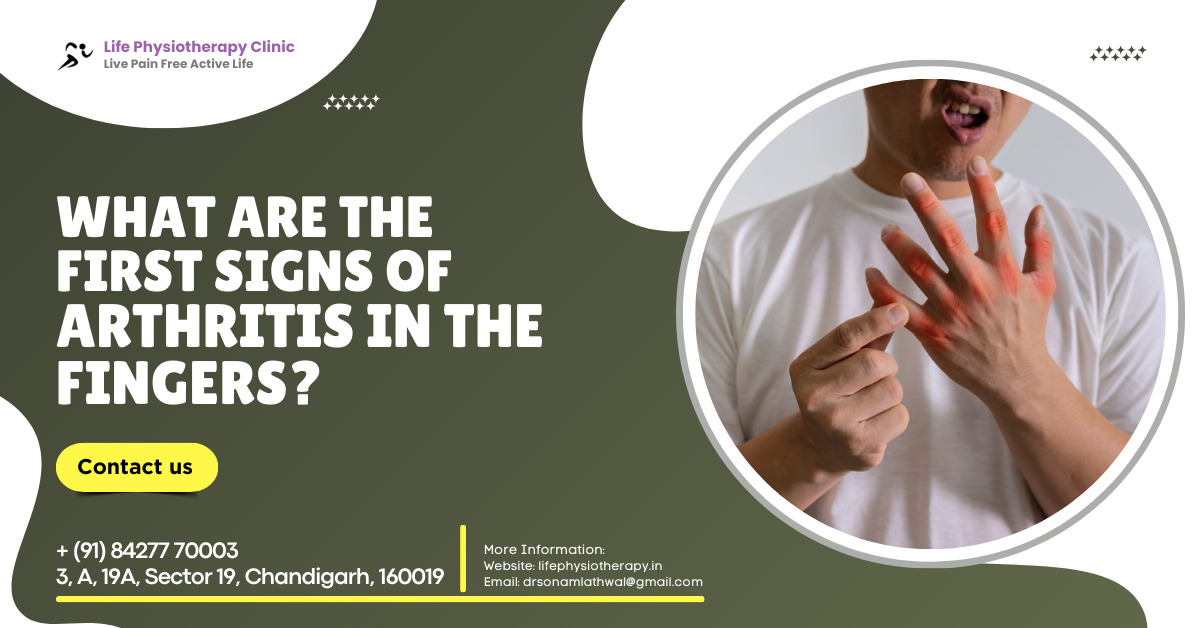What are the First Signs of Arthritis in the Fingers? Early Symptoms to Watch For
The first signs of arthritis in the fingers often include stiffness, swelling, and pain in the joints. You might also notice a decreased range of motion, a grinding sensation when moving your fingers, and sometimes warmth in the affected area.
Introduction
Arthritis is a debilitating condition that affects the joints, causing pain and stiffness. It can significantly impact the hands, making everyday tasks challenging. The term “arthritis” encompasses over 100 different types of joint diseases and conditions, each with unique symptoms and progressions.
What is Arthritis of the Hands?
Arthritis of the hands is a condition where there is inflammation in the joints of the hand or wrist. This inflammation results in pain, swelling, and restricted movement, severely impacting hand function. Hands play a crucial role in our daily activities, and arthritis can hinder this functionality, affecting overall quality of life.
Types of Arthritis
Osteoarthritis (OA)

Osteoarthritis is the most common form of arthritis. It is often referred to as “wear and tear” arthritis because it occurs when the cartilage that cushions the ends of the bones wears down over time.
Symptoms:
- Aching and soreness in the affected joints, especially after periods of inactivity or overuse.
- Stiffness, particularly on waking or following activity.
- Limited range of motion.
- Swelling around the joints.
Rheumatoid Arthritis (RA)

Rheumatoid arthritis is an autoimmune disorder. In RA, the immune system mistakenly attacks the synovium—the lining of the membranes that surround your joints.
Symptoms:
- Tender, warm, swollen joints.
- Morning stiffness that may last for hours.
- Firm bumps of tissue under the skin on your arms (rheumatoid nodules).
- Fatigue, fever, and weight loss.
Psoriatic Arthritis

Psoriatic arthritis affects some people who have psoriasis—a condition that features red patches of skin topped with silvery scales. Joint problems often begin before any noticeable skin lesions appear.
Symptoms:
- Swollen fingers and toes that can resemble sausages.
- Pain at the points where tendons and ligaments attach to the bones.
- Morning stiffness and fatigue.
Areas Commonly Affected by Arthritis in the Hand
Arthritis can affect any joint in the hands but is most commonly found in:
- Base of the Thumb: At the carpometacarpal (CMC) joint.
- Middle Joint of a Finger: Also known as the proximal interphalangeal (PIP) joints.
- End Joint Closest to the Fingertip: Called the distal interphalangeal (DIP) joints.
Who Commonly Gets Arthritis and When?
Arthritis affects various demographics, but certain groups are more prone:
Age:
- Osteoarthritis (OA): Common in adults over 50, as cartilage wears down with age.
- Rheumatoid Arthritis (RA): Often begins between 30 and 60; can also affect children (juvenile arthritis).
Gender:
- RA: More common in women, who are up to three times likelier to develop it.
- OA: Also more frequent in women, especially post-menopause.
Genetics and Family History:
- A family history of OA or RA increases risk due to genetic predispositions.
Lifestyle Factors:
- Obesity: Adds stress to joints.
- Smoking: Linked to higher RA risk and severity.
- Previous Injuries: Past hand or joint injuries heighten the risk of arthritis in those areas.
Symptoms and Causes
Symptoms
The common symptoms of arthritis in the hands include:
- Pain: Persistent or recurring pain in the joints.
- Stiffness: Difficulty in moving the fingers, especially after periods of inactivity.
- Swelling: Inflammation and puffiness around the joints.
- Tenderness: Sensitivity in the joints when applied pressure.
- Redness and Warmth: Signs of inflammation.
- Bony Enlargements: Formation of osteophytes (bone spurs) around the joints, which can be noticed in osteoarthritis.
Causes
The specific cause of arthritis depends on the type but can include:
- Aging: Natural degeneration of joint cartilage.
- Genetics: Family history of arthritis.
- Previous Joint Injuries: Including fractures or severe sprains.
- Overuse/Repetitive Motion: Excessive use of hands in activities such as typing, assembly line work, or playing musical instruments.
Diagnosis & Tests
Diagnosing arthritis involves a multi-step approach, including:
- Medical History Review: Doctors will discuss symptoms, medical history, and any relevant family history.
- Physical Examination: Observing and feeling the joints for signs of inflammation, fluid, or pain.
- X-rays: Key in identifying changes in the bone structure and extent of cartilage loss.
- MRI or Ultrasound: Provide more detailed images of both hard and soft tissues, particularly useful for identifying the early stages of rheumatoid arthritis.
- Blood Tests: Used to detect specific markers of inflammation and autoimmune activity, particularly for RA. Tests may include rheumatoid factor (RF), anti-cyclic citrullinated peptide (anti-CCP) antibodies, and erythrocyte sedimentation rate (ESR).
Management & Treatment
Managing arthritis in the hands focuses on relieving pain, minimizing potential joint damage, and improving or maintaining functionality.
Non-Surgical Treatment
- Medication: Varies based on the type and severity of arthritis. Includes:
- NSAIDs (Nonsteroidal Anti-inflammatory Drugs) like ibuprofen.
- Corticosteroids: Reduce inflammation and slow joint damage.
- DMARDs (Disease-Modifying Antirheumatic Drugs) for RA.
- Biologics: Used for autoimmune arthritis, these medications target specific steps in the inflammatory process.
- Physical Therapy: Exercises to increase strength, flexibility, and range of motion.
- Occupational Therapy: Teaches how to perform daily tasks differently to reduce strain on the joints.
- Splinting or Bracing: Support to stabilize the joint and reduce pain.
- Lifestyle Modifications: Incorporating ergonomic tools, reducing repetitive movements, and eating an anti-inflammatory diet rich in Omega-3 fatty acids and antioxidants.
Surgical Treatments
When arthritis severely impacts hand function and non-surgical treatments are ineffective, surgical options may be considered:
- Joint Fusion (Arthrodesis): Permanently fusing bones together to reduce pain but the joint loses its motion.
- Joint Replacement (Arthroplasty): Replacing the damaged joint with a prosthesis made of plastic, ceramic, or metal.
- Tendon Repair and Release: Surgical procedure to repair or release tendons to restore joint function.
At-Home Therapies for Hand Arthritis
Managing arthritis at home can complement medical treatments and help alleviate symptoms:
- Hot and Cold Therapy: Applying heat can soothe stiff joints, while cold packs can reduce swelling and numb pain.
- Regular Exercise: Gentle exercises, like finger stretches and hand grips, can maintain joint flexibility and strength.
- Topical Treatments: Over-the-counter creams containing capsaicin or menthol can provide temporary pain relief.
- Healthy Diet: Consuming anti-inflammatory foods, like fish rich in Omega-3 fatty acids, fruits, vegetables, and whole grains, can help manage inflammation.
- Hand Massages: Gentle massaging of the hands can improve circulation and reduce stiffness.
- Maintain a Healthy Weight: Reducing overall body weight can ease the stress on joints.
Risk Factors
Certain factors can increase the likelihood of developing arthritis in the hands:
- Age: The risk of arthritis increases with age.
- Gender: Women are more likely to develop rheumatoid arthritis, while men are more prone to other types like gout.
- Genetics: A family history of arthritis can predispose individuals to the condition.
- Occupation and Hobbies: Jobs and activities that involve repetitive hand movements can elevate the risk.
- Previous Injuries: Past joint injuries can contribute to the development of arthritis later in life.
- Obesity: Excess weight can put additional stress on joints, including those in the hands.
Complications
Arthritis in the hands can lead to several complications, affecting overall function and quality of life:
- Chronic Pain: Persistent discomfort that can interfere with daily activities.
- Joint Deformity: Over time, arthritis can cause visible changes and deformities in the joints.
- Reduced Mobility: Stiffness and pain can lead to a decreased range of motion.
- Loss of Function: Severe arthritis may hinder the ability to perform everyday tasks, such as opening jars, buttoning shirts, or typing.
- Psychological Impact: Chronic pain and decreased hand function can lead to emotional strain, including anxiety and depression.
Prevention
While it’s not always possible to prevent arthritis, certain strategies can help reduce the risk and delay its onset:
- Maintain a Healthy Weight: Reduces stress and strain on joints.
- Stay Active: Regular low-impact exercises, such as swimming or biking, keep the joints flexible and muscles strong.
- Balanced Diet: Emphasizing whole foods and anti-inflammatory nutrients such as Omega-3 fatty acids found in fish, flaxseeds, and walnuts.
- Avoid Joint Injuries: Using protective equipment during activities, good ergonomics in the workplace, and proper techniques in daily activities to minimize the impact on joints.
Conclusion
Arthritis in the fingers can significantly impact daily life, but early detection and appropriate management can ease the symptoms and maintain hand function. Recognize the signs, consult with healthcare professionals, and consider a combination of treatment options — from medications and therapy to lifestyle changes. With the right support and approach, it’s possible to manage arthritis effectively and improve your quality of life.
FAQs
Q: Can arthritis be cured?
A: While there is no cure for arthritis, treatments can help manage symptoms and improve quality of life.
Q: How quickly does arthritis progress in the hands?
A: The progression of arthritis varies significantly from person to person, and depends on the type of arthritis, genetic factors, lifestyle, and treatment adherence.
Q: Are there alternative therapies for arthritis pain?
A: Some people find relief through alternative therapies such as acupuncture, massage, and herbal supplements, although their effectiveness may vary. It is important to consult a healthcare provider before trying alternative treatments.
Q: Can diet affect arthritis symptoms?
A: Yes, certain foods can help reduce inflammation. A diet rich in Omega-3 fatty acids, antioxidants, and anti-inflammatory foods such as fruits, vegetables, whole grains, and fatty fish can help manage arthritis symptoms.
Q: Is physical activity good for arthritis in the hands?
A: Regular, low-impact exercises can help maintain joint function and relieve stiffness. It’s important to consult with a healthcare provider to design an appropriate exercise regimen.

